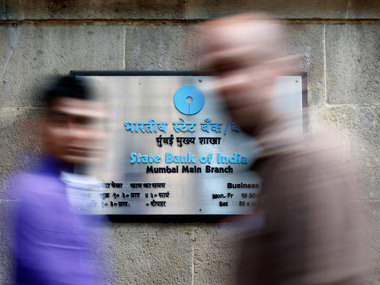On Thursday, India ratings, formerly known as Fitch India, became the latest rating agency flashing the warning signal to Union Finance Minister Arun Jaitley and his budget team on the faltering health of India’s state-run banks and the huge capital they would require thereof. The agency estimates that government banks would require about Rs 5.3 lakh crore of capital in the run up to the Basel-III compliance by 2019, of which Rs 1.6 lakh crore should come from the government. In the immediate future, the government must infuse at least Rs 20,000 crore in these banks, India Ratings said. As per the Basel-III norms, Indian banks need to have minimum equity capital adequacy ratio of 7 percent and Common Equity Tier-1 (CET-1) capital of 5.5 percent. A Firstpost analysis of Capitaline data shows that at least 5 government banks have Tier-I capital adequacy less than 8 percent. In addition, banks will also need to build a 2.5 percent capital conservation buffer to be used in bad times. In the recent past, other raters, including Moody’s Investors Services, too flagged caution on the immense capital requirement of state-run banks, giving their own estimates. According to India Ratings, the main concern of Indian banks in the fiscal year 2015-16 would be that of capital shortage. It will be a bigger worry than the worsening asset quality. But, both the problems are painfully interconnected. [caption id=“attachment_2083091” align=“alignleft” width=“380”]  State Bank of India is the only state-run bank to announce a substantial capital raising plan. Reuters[/caption] If one analyses the earnings pattern of state-run banks in the recent quarters, there has been a marked increase in the incremental slippages and restructured assets of loans, which would have substantially jacked up the capital requirements of these banks in the form of higher provisions. Also, the chunk of restructured loans turning bad, too have gone up for most of the state-run banks. The stress is visible on the balance sheets of most banks, including Punjab National Bank (gross non-performing assets, GNPAs, 5.97 percent, Union Bank of India (5.08 percent), Indian Overseas Bank (8.12 percent), to name a few. There has been a corresponding increase in the provisions. Currently, the gross NPAs of banks stand at Rs 2.7 lakh crore. If one combines this with the loans being recast, this would constitute over 10 percent of the total banks loans. Under the new norms, the RBI has made the asset quality recognition norms more stringent for banks, which require them acknowledging the problem early and acting accordingly. Though closer monitoring and recognition will indeed yield results in the long-term, the pain is inevitable in the immediate future, with most banks expecting the asset quality continue to deteriorate at least for the next few more quarters. After that point, things may get better provided the real economic growth improves and stalled projects get back on track. Current norms stipulate banks to make 5 percent of provisions for every fresh loan they restructure. If the loan goes fully bad, the provisioning rises up to 100 percent. Banks would also need capital to fund a reviving economy. According to the PJ Nayak committee, which looked at various aspects of public sector banks, state-run banks would need over Rs 3 lakh crore capital if their loan book grows 16 percent per year. Even though the loan demand is yet to pick up and most banks are still struggling to hit double-digit loan growth, once the economy is back on higher growth track, the demand scenario will change, necessitating banks to keep sufficient money ready to meet it. Despite the recent bullish rally on markets, the government hasn’t, surprisingly, given any major push for the capital raising plans in state-run banks. Ideally, the government should have begun the process by now if it is serious about the problem. The only bank, which has announced a substantial capital raising plan among state-run banks, is State Bank of India, which intends to raise Rs 15,000 crore through a public issue. SBI raising money on its own is good news for smaller state-run banks, as they will get a larger share of the government’s annual capital infusion. The immediate thing to watch for, as India Ratings said, is how much Jaitley will allocate for state-run banks on 28 February. If it falls significantly below the expectations, that can act as a major turn off for rating agencies and global investors. In the last four financial years, the government has managed to infuse a total of Rs 58,600 crore of capital in state-run banks. The budgeted capital infusion in 2014-15 is Rs 11,200 crore, just about half of what state-run banks actually need. What Jaitley would do this time is a mystery as yet. In the absence of a clear road map, it wouldn’t be too distant a future before one sees a crisis situation in some of the weaker state-run banks.
In the absence of a clear road map, it wouldn’t be too distant a future before one sees a crisis situation in some of the weaker state-run banks
Advertisement
End of Article


)

)
)
)
)
)
)
)
)



